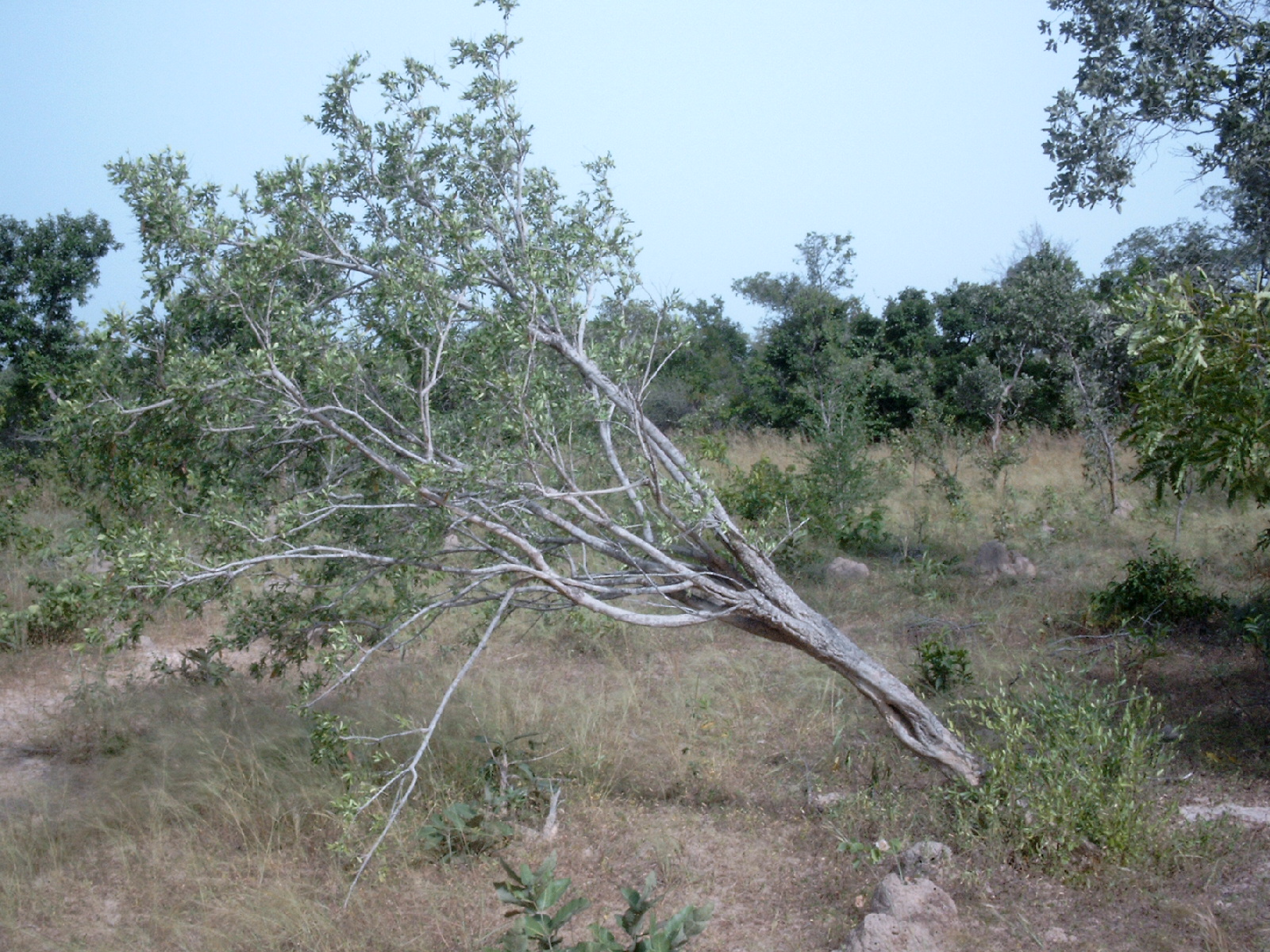Securidaca longepedunculata

|
|
Securidaca longepedunculata Common Names: Violet Tree, Mother of All Medicines,
Fiber Tree, Wild Wisteria Scientific
Classification Kingdom: Plantae Phylum: Tracheophyta Class: Magnoliopsida Order: Fabales Family: Polygalaceae Genus: Securidaca Species: S. longepedunculata Synonyms: Securidaca virgaurea A.St.-Hil., Securidaca robusta Klotzsch, Securidaca
longepedunculata var. longepedunculata Morphological Description Securidaca longepedunculata is a deciduous shrub or small tree, typically 2–10 m tall,
occasionally reaching 12 m. Its key features include: · Bark: Smooth, pale grey, peeling in thin strips, often harvested
for medicine · Leaves: Simple, alternate, elliptic to oblong, 2–7 cm long, 1–3 cm
wide, hairless or slightly pubescent · Flowers: Small, violet to purple, fragrant, borne on long peduncles
(up to 15 cm) in racemes, blooming in early summer · Fruit: Winged samara, 3–5 cm long, with a curved, papery wing,
green turning brown at maturity The winged fruit aids
wind dispersal, enhancing its spread across savannas (Van Wyk et al., 2009). Distribution and Habitat Securidaca longepedunculata is widely distributed across tropical and subtropical
Africa, from Senegal and Mali in West Africa to Ethiopia and Kenya in East
Africa, and south to South Africa and Zimbabwe. It thrives in: · Ecosystems: Savannas, woodlands, forest edges, and riverbanks · Climate: Warm, semi-arid to humid (rainfall 500–1,500 mm annually),
temperatures 20–35°C · Soils: Sandy, loamy, well-drained, often near watercourses Ethnopharmacology Securidaca longepedunculata, commonly known as the violet tree, is extensively utilized in
African traditional medicine for its diverse therapeutic properties. Various
parts of the plant, particularly the roots and bark, are employed to address
ailments such as sexually transmitted infections, hernias, coughs, fevers,
ascariasis, constipation, headaches, rheumatism, stomach aches, tuberculosis,
pain, epilepsy, pneumonia, and skin infections. Phytochemical analyses have
identified compounds like xanthones and securinine, which contribute to the
plant's pharmacological activities, including antiparasitic, antibacterial,
antifungal, antiplasmodial, anti-inflammatory, and anticonvulsant effects.
Notably, studies have demonstrated that xanthones isolated from S.
longepedunculata can induce relaxation of corpus cavernosal smooth muscle,
supporting its traditional use in treating erectile dysfunction. Additionally,
the plant is recognized for its potential in cancer management, with
traditional medicine practitioners in Northeastern Nigeria frequently utilizing
it for this purpose. · Headaches: In Nigeria, powdered roots rubbed on the forehead reduced
pain in mice by 55% at 400 mg/kg, linked to methyl salicylate (Adebiyi, 2006). · Malaria: In Cameroon, root extracts inhibited Plasmodium falciparum (IC₅₀ 10–50 µg/mL), attributed to
xanthones (Bickii et al., 2007). · Respiratory Infections: In Mali, leaf decoctions treat coughs;
antimicrobial activity against Streptococcus pneumoniae (MIC 64 µg/mL) noted (Mongalo et al.,
2015). · Digestive Issues: The bark infusions alleviated diarrhea. · Aphrodisiac: Two new xanthones were
isolated; one of them showed potent activity to relax the corpus cavernosal
smooth muscle by 97 % in comparison to sildenafil (Viagra) at 1.8 x 10(-5)
mg/ml, supporting erectile dysfunction treatment (Rakuambo et al., 2006).
⚠ Toxicity Profile: The plant contains saponins and securixanthones,
causing toxicity at high doses (>1,000 mg/kg in rats), with symptoms like
vomiting, convulsions, and respiratory distress. LD₅₀ exceeds 2,000 mg/kg, but
caution is advised (Mongalo et al., 2015). Additional Uses · Fiber: Leaf and stem fibers are woven into ropes, mats, and baskets
(Van Wyk et al., 2009). · Cultural: In Hausa culture, known as "Mother of All
Medicines," used in protective rituals (Burkill, 1997). · Ecological: Root volatiles (e.g., methyl salicylate) repel stored grain
pests, reducing losses by 90% (Jayasekara et al., 2005). References
External Links More Pictures |
|
| Compounds of Securidaca longepedunculata | |
| References |